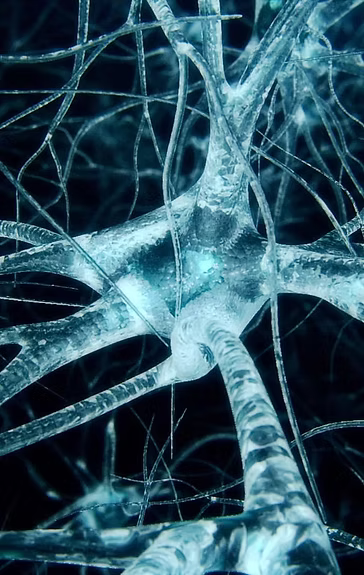量子信息生物反馈技术



什么是生物反馈?
生物反馈是一种治疗技术,在这种技术中,人们接受培训,通过使用来自自己身体的有意识和潜意识信号来改善他们的健康。
心理学家用它来帮助紧张和焦虑的客户学会放松。许多不同领域的专家使用生物反馈来帮助他们的客户应对疼痛。客户和从业者都使用它来衡量和指导治疗的进展。对于客户来说,生物反馈设备允许他们“看到”或“听到”体内的活动。
生物反馈实习生,为了提高技能,监控性能并进行内部调整,从而改变信号。生物反馈从业者充当教练,站在场边设定目标和预期限制,并就如何提高绩效提供建议。
生物反馈是如何工作的?
大多数从生物反馈中受益的客户都接受过放松和改变行为的培训。大多数科学家认为,放松是许多疾病生物反馈治疗的关键组成部分,尤其是那些因压力而引起或恶化的疾病。他们的推理是基于对压力对身体影响的已知信息。简而言之,论点是这样的:压力事件会产生强烈的情绪,从而引起某些身体反应。其中许多反应是由交感神经系统控制的,交感神经系统是帮助身体通过“逃跑或战斗”来应对紧急情况的神经组织网络。
对紧急情况的典型反应模式可能出现在所有人都主要面临身体威胁的时期。尽管我们现在生活的“威胁”很少是物理上的,但身体的反应就好像它们是一样的:瞳孔放大以让更多的光线进入。汗水涌出,减少皮肤割伤的机会。皮肤附近的血管收缩以减少出血,而大脑和肌肉中的血管扩张以增加氧气供应。胃肠道,包括胃和肠,会减慢以减少消化中消耗的能量。心跳加快,血压升高。
通常,当压力事件结束时,人们会冷静下来,尤其是如果他们已经做了一些事情来应对它。例如,想象一下,如果你走在一条黑暗的街道上,听到有人向你跑来,你自己的反应。你会害怕。您的身体让您准备好抵御攻击者或跑得足够快以逃脱。当你真的逃避时,你会逐渐放松。
如果你对你的老板生气,那是另一回事。您的身体可能会准备战斗。但既然你想保住工作,你就试着忽略那些愤怒的情绪。同样,如果您在回家的路上遇到交通堵塞,您也无能为力。这些情况真的会让你生病。你的身体已经为行动做好了准备,但你无法行动。
个体对压力的反应方式不同。在一些患者中,一种功能(例如血压)变得更加活跃,而其他功能则保持正常。许多专家认为,这些个体对压力的身体反应可能会成为习惯。当身体反复被唤醒时,一个或多个功能可能会永久过度活跃。最终可能会对身体组织造成实际损害。
生物反馈通常旨在改变对可能导致疼痛或疾病的压力的习惯性反应。许多临床医生认为,他们的一些客户已经忘记了如何放松。身体反应的反馈(如皮肤温度和肌肉紧张)提供了信息,以帮助客户识别放松状态。生物反馈会议的结果也可能作为减轻紧张的一种奖励。这就像一位钢琴老师,当一位年轻的音乐家终于正确地弹奏一首曲子时,他的眉头变成了微笑。
生物反馈通常被定义为向一个人展示持续的生物信息,例如心率,以便他或她能够了解皮肤内部的行为。生物反馈训练是指使用这些信息来学习如何自我调节所显示的生物过程。
使用止痛药从不解决疾病的原因。该系统的方法首先处理原因。它确实可以疏通阻塞的生活流动并刺激心灵以平衡身体。
生物反馈的历史
“生物反馈”一词是在 1960 年代后期创造的,用于描述实验室程序,然后用于训练实验研究对象改变大脑活动、血压、心率和其他通常不自愿控制的身体功能。
当时,许多科学家都期待着生物反馈能让我们对身体有很大程度的控制权。例如,他们认为,我们也许能够通过改变脑电波的模式来“将”自己变得更有创造力。研究表明,生物反馈可以帮助治疗许多疾病和痛苦状况。它表明,我们对所谓的非自愿身体机能的控制比我们曾经认为的要多。但它也表明,大自然限制了这种控制的程度。科学家们现在正试图确定我们可以施加多少自愿控制。
如今,生物反馈是如何应用的?
客户通常会接受某种形式的放松练习。有些人学会识别引发他们症状的情况。他们也可以被教导如何避免或应对这些压力事件。大多数人被鼓励改变他们的习惯,有些人接受了获得这种自我控制的特殊技巧的培训。
生物反馈不能治愈疾病,也不能单独使人健康。它是一种工具,是医疗保健专业人员可用的众多工具之一。它提醒医生,行为、思想和感受会深刻影响身体健康。生物反馈有助于客户和医生了解他们必须作为一个团队一起工作。
您的职责
生物反馈对客户提出了不同寻常的要求。他们必须检查自己的日常生活,以了解他们是否可能导致自己的痛苦。他们必须认识到,他们可以通过自己的努力来治愈一些身体上的疾病。他们必须致力于每天进行生物反馈或放松练习。他们必须改变坏习惯,甚至放松一些好习惯。最重要的是,他们必须承担维护自身健康的大部分责任。
What is Biofeedback?
Biofeedback is a treatment technique in which people are trained to improve their health by using conscious and subconscious signals from their own bodies.
Psychologists use it to help tense and anxious clients learn to relax. Specialists in many different fields use biofeedback to help their clients cope with pain. Both clients and practitioners use it to gauge and direct the progress of treatment. For clients, the biofeedback device allows them to “see” or “hear” activity inside their bodies.
The biofeedback trainee, in an attempt to improve a skill, monitors the performance & makes internal adjustments, which alter the signals. The biofeedback practitioner acts as a coach, standing at the sidelines setting goals and limits on what to expect and giving hints on how to improve performance.
How does Biofeedback work?
Most clients who benefit from biofeedback are trained to relax and modify their behavior. Most scientists believe that relaxation is a key component in biofeedback treatment of many disorders, particularly those brought on or made worse by stress. Their reasoning is based on what is known about the effects of stress on the body. In brief, the argument goes like this: Stressful events produce strong emotions, which arouse certain physical responses. Many of these responses are controlled by the sympathetic nervous system, the network of nerve tissues that helps prepare the body to meet emergencies by “flight or fight.”
The typical pattern of response to emergencies probably emerged during the time when all humans faced mostly physical threats. Although the “threats” we now live with are seldom physical, the body reacts as if they were: The pupils dilate to let in more light. Sweat pours out, reducing the chance of skin cuts. Blood vessels near the skin contract to reduce bleeding, while those in the brain and muscles dilate to increase the oxygen supply. The gastrointestinal tract, including the stomach and intestines, slows down to reduce the energy expensed in digestion. The heart beats faster, and blood pressure rises.
Normally, people calm down when a stressful event is over especially if they have done something to cope with it. For instance, imagine your own reactions if you're walking down a dark street and hear someone running toward you. You get scared. Your body prepares you to ward off an attacker or run fast enough to get away. When you do escape, you gradually relax.
If you get angry with your boss, it's a different matter. Your body may prepare to fight. But since you want to keep your job, you try to ignore the angry feelings. Similarly, if on the way home you get stuck in traffic, there's nothing you can do to get away. These situations can literally make you sick. Your body is prepared for action, but you cannot act.
Individuals differ in the way they respond to stress. In some, one function, such as blood pressure, becomes more active while others remain normal. Many experts believe that these individual physical responses to stress can become habitual. When the body is repeatedly aroused, one or more functions may become permanently overactive. Actual damage to bodily tissues may eventually result.
Biofeedback is often aimed at changing habitual reactions to stress that can cause pain or disease. Many clinicians believe that some of their clients have forgotten how to relax. Feedback of physical responses such as skin temperature and muscle tension provides information to help clients recognize a relaxed state. The results of a biofeedback session may also act as a kind of reward for reducing tension. It's like a piano teacher whose frown turns to a smile when a young musician finally plays a tune properly.
Biofeedback is generally defined as the presentation to a person of ongoing biological information, such as heart rate, so that he or she can become aware of inside-the-skin behaviors. Biofeedback training means using the information in learning how to self-regulate the biological process being displayed.
Using a pain killer never deals with the cause of disease. This system's method deals first with the cause. It does unblock the blockage to flow the life & Stimulating the mind to balance body.
The history of Biofeedback
The word “Biofeedback” was coined in the late 1960s to describe laboratory procedures then being used to train experimental research subjects to alter brain activity, blood pressure, heart rate, and other bodily functions that normally are not controlled voluntarily.
At the time, many scientists looked forward to the day when biofeedback would give us a major degree of control over our bodies. They thought, for instance, that we might be able to “will” ourselves to be more creative by changing the patterns of our brain waves. Research has demonstrated that biofeedback can help in the treatment of many diseases and painful conditions. It has shown that we have more control over so-called involuntary bodily function than we once thought possible. But it has also shown that nature limits the extent of such control. Scientists are now trying to determine just how much voluntary control we can exert.
How is Biofeedback being used today?
Clients usually are taught some form of relaxation exercise. Some learn to identify the circumstances that trigger their symptoms. They may also be taught how to avoid or cope with these stressful events. Most are encouraged to change their habits, and some are trained in special techniques for gaining such self-control.
Biofeedback cannot cure disease or by itself make a person healthy. It is a tool, one of many available to health care professionals. It reminds physicians that behavior, thoughts, and feelings profoundly influence physical health. Biofeedback helps both clients and doctors understand that they must work together as a team.
Your responsibilities
Biofeedback places unusual demands on clients. They must examine their day-to-day lives to learn if they may be contributing to their own distress. They must recognize that they can, by their own efforts, remedy some physical ailments. They must commit themselves to practicing biofeedback or relaxation exercises every day. They must change bad habits, even ease up on some good ones. Most important, they must accept much of the responsibility for maintaining their own health.


